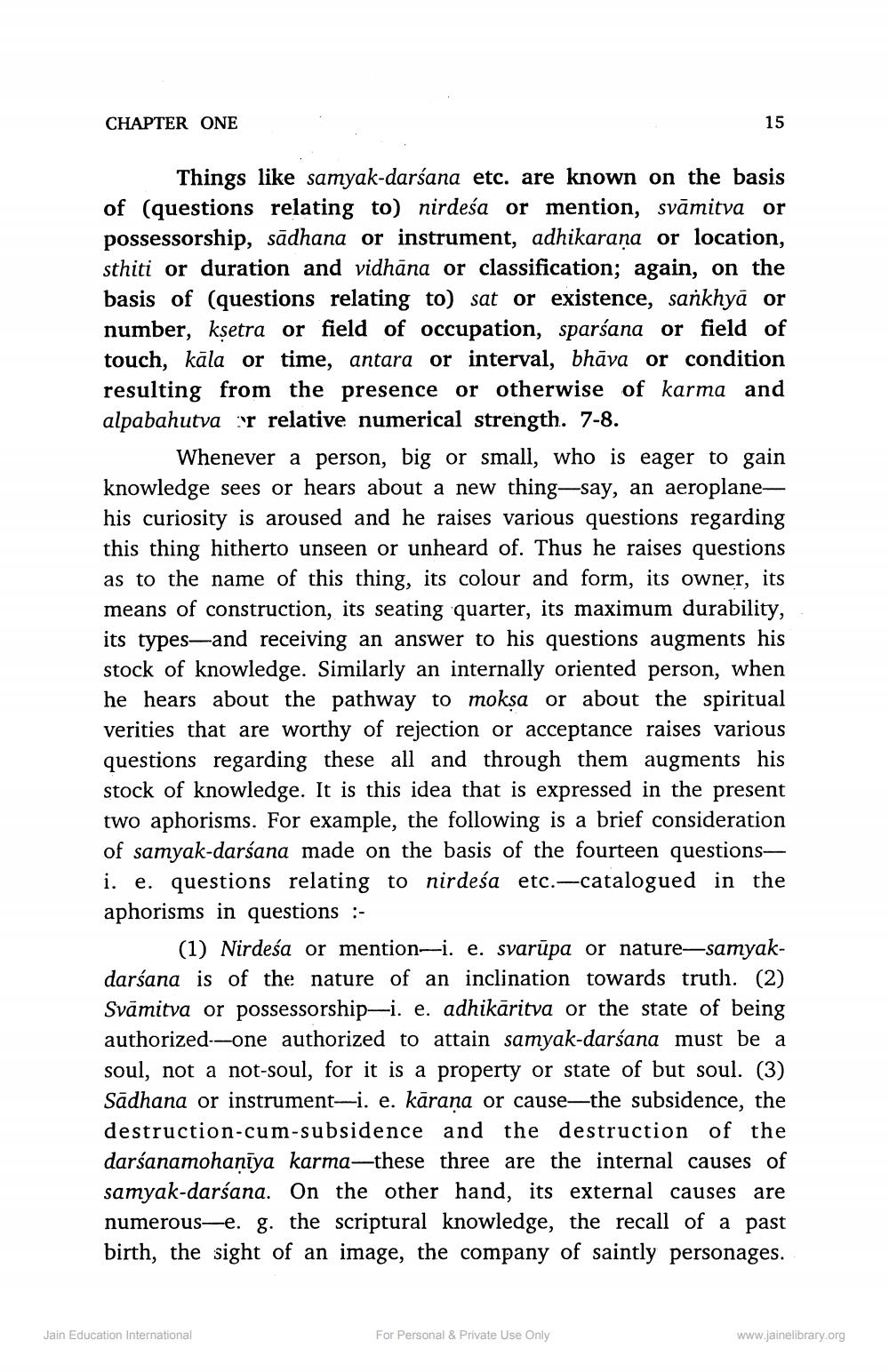________________
CHAPTER ONE
15
Things like samyak-darśana etc. are known on the basis of (questions relating to) nirdeśa or mention, svāmitva or possessorship, sādhana or instrument, adhikarana or location, sthiti or duration and vidhāna or classification; again, on the basis of (questions relating to) sat or existence, sankhyā or number, kşetra or field of occupation, sparśana or field of touch, kāla or time, antara or interval, bhāva or condition resulting from the presence or otherwise of karma and alpabahutva ar relative numerical strength. 7-8.
Whenever a person, big or small, who is eager to gain knowledge sees or hears about a new thing—say, an aeroplanehis curiosity is aroused and he raises various question this thing hitherto unseen or unheard of. Thus he raises questions as to the name of this thing, its colour and form, its owner, its means of construction, its seating quarter, its maximum durability, its types—and receiving an answer to his questions augments his stock of knowledge. Similarly an internally oriented person, when he hears about the pathway to mokṣa or about the spiritual verities that are worthy of rejection or acceptance raises various questions regarding these all and through them augments his stock of knowledge. It is this idea that is expressed in the present two aphorisms. For example, the following is a brief consideration of samyak-darśana made on the basis of the fourteen questionsi. e. questions relating to nirdeśa etc.-catalogued in the aphorisms in questions :
(1) Nirdeśa or mention-i. e. svarūpa or nature—samyakdarśana is of the nature of an inclination towards truth. (2) Svāmitva or possessorship-i. e. adhikāritva or the state of being authorized--one authorized to attain samyak-darśana must be a soul, not a not-soul, for it is a property or state of but soul. (3) Sādhana or instrument–i. e. kāraṇa or cause—the subsidence, the destruction-cum-subsidence and the destruction of the darśanamohanīya karma—these three are the internal causes of samyak-darśana. On the other hand, its external causes are numerous—e. g. the scriptural knowledge, the recall of a past birth, the sight of an image, the company of saintly personages.
Jain Education International
For Personal & Private Use Only
www.jainelibrary.org




